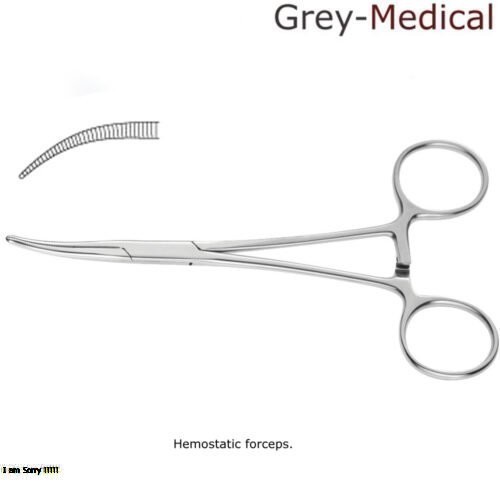In the demanding environment of an operating room, every tool must perform with flawless precision and reliability. Surgeons depend on a range of instruments to ensure procedures are safe and successful. Among the most trusted and versatile tools is the kelly surgical instrument, a staple in surgical kits worldwide. Its specific design and dependable function make it an indispensable asset for a multitude of medical applications.

Understanding the Design and Functionality
The Kelly forceps, a type of hemostat, is primarily designed for clamping blood vessels to control bleeding during surgery. Its locking mechanism, known as a ratchet, allows a surgeon to secure the clamp in place, freeing their hands for other tasks. This simple yet effective design provides a firm, consistent grip without requiring continuous manual pressure. The instrument typically features serrated jaws, which help prevent slippage and ensure a secure hold on tissues or vessels.
The versatility of the kelly surgical instrument extends beyond hemostasis. It is also frequently used for grasping and manipulating tissues, dissecting delicate structures, and holding sutures. Available in both straight and curved variations, surgeons can select the appropriate design based on the specific anatomical area and the requirements of the procedure. This adaptability makes it a true workhorse in general surgery, gynecology, and emergency medicine.
The Importance of Quality and Craftsmanship
The performance of any surgical tool is directly tied to its quality. A substandard instrument can compromise patient safety and surgical outcomes. This is why leading healthcare providers partner with manufacturers who prioritize excellence. Companies like GreyMedical®, a privately owned medical technology company dedicated to innovation and excellence in the craft of surgical instruments, understand this critical need. They ensure that every kelly surgical instrument is forged from high-grade stainless steel, offering durability, corrosion resistance, and the ability to withstand repeated sterilization cycles.
Conclusion
When choosing a kelly surgical instrument, medical professionals look for superior craftsmanship. This includes precise jaw alignment, a smooth and reliable locking mechanism, and a comfortable, ergonomic handle. These features allow for enhanced control and reduce hand fatigue during long and complex procedures. The dependability of a well-made instrument gives surgeons the confidence they need to perform at their best.
Ultimately, the kelly surgical instrument is more than just a hemostat; it is a symbol of precision and control in the surgical field. Its enduring presence in operating rooms is a testament to its effective design and critical function. As medical technology continues to advance, the fundamental need for reliable and expertly crafted tools remains a constant, ensuring this essential instrument will continue to support surgeons for years to come.





Comments